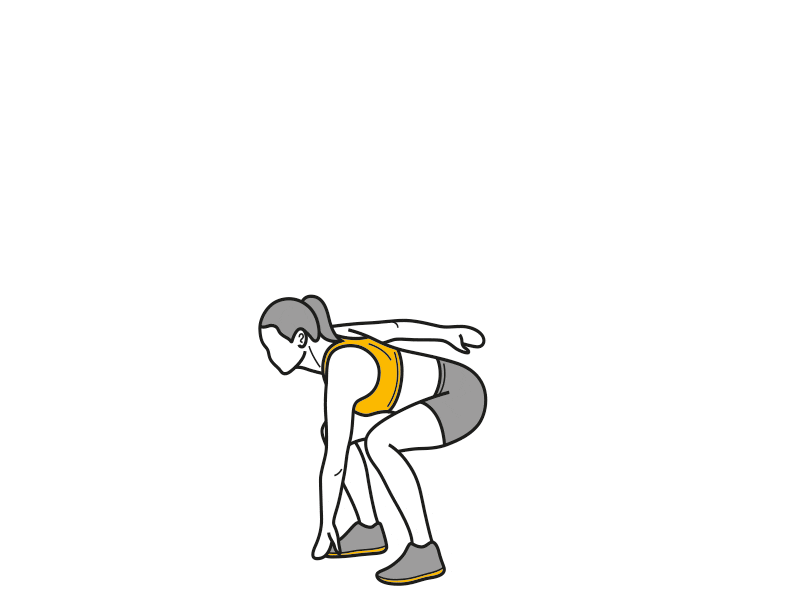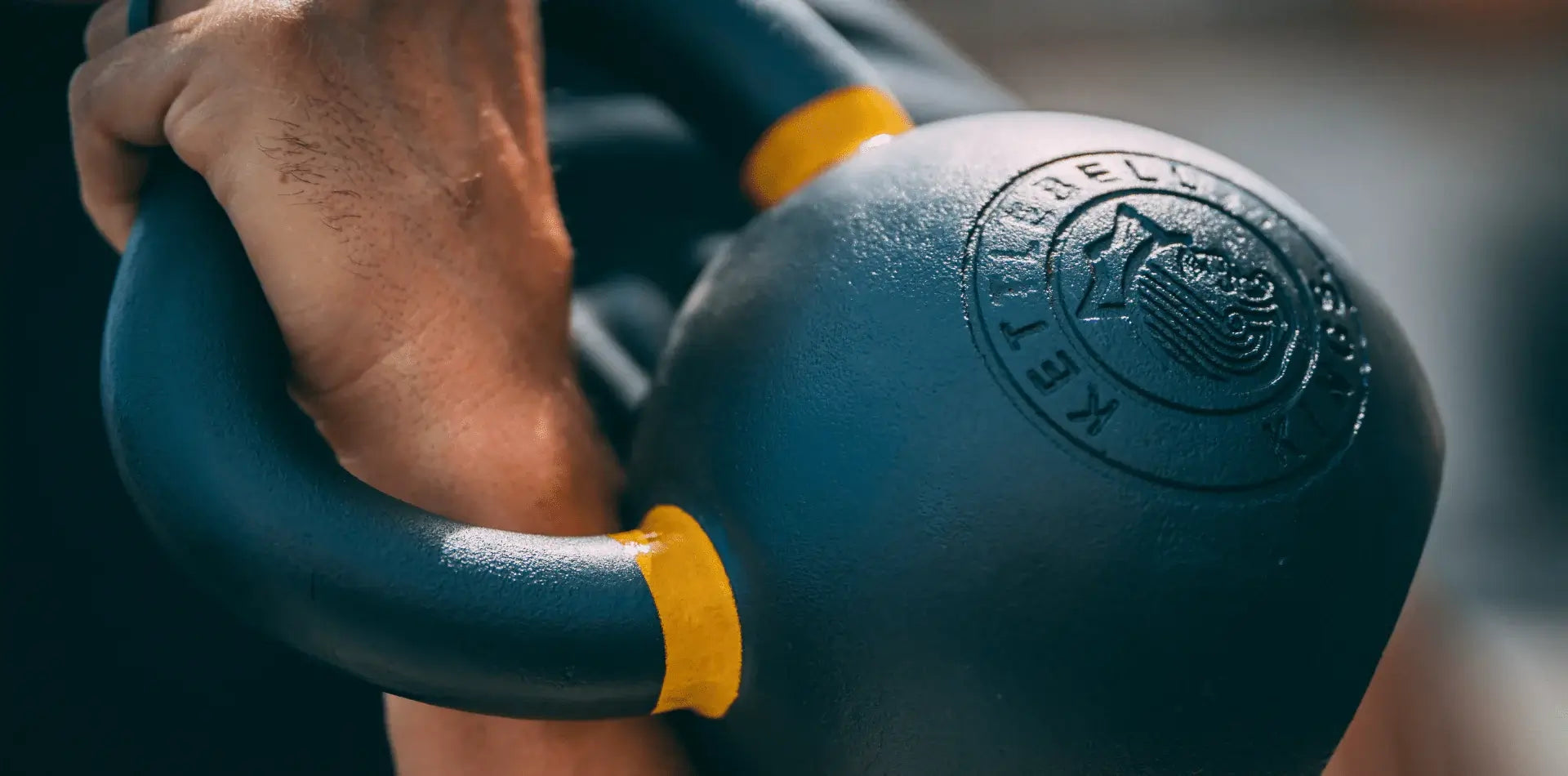As a female fitness trainer, I'm passionate about helping women achieve their health and fitness goals. One of the most versatile and effective tools in our arsenal is the kettlebell. Not only do kettlebell workouts offer incredible benefits, but they also empower women to take charge of their fitness journey. In this guide, we'll delve into the crucial topic of selecting the right kettlebell weight, considering various factors, and providing practical advice to ensure you get the most out of your kettlebell workouts.
Benefits of Kettlebell Workouts for Women
Kettlebells are a game-changer for women seeking a dynamic and efficient workout routine. Let's explore some of the remarkable benefits they offer
-
Strength Training for Women
Strength training is not just for men; it's an essential component of a well-rounded fitness plan for women too. Kettlebells provide an excellent way to build lean muscle, enhance bone density, and boost your metabolism. With proper training, you'll not only feel stronger but also improve your overall health.
-
Kettlebell Workouts for Fat Loss
For women aiming to lose weight, kettlebell workouts can be a game-changer. The combination of cardio and strength training in kettlebell routines helps burn calories efficiently, leading to fat loss. Plus, the afterburn effect ensures you continue to burn calories even after your workout is done.
-
Building Muscle with Kettlebells
Many women aspire to have a toned and sculpted physique. Kettlebells are fantastic for targeting specific muscle groups, leading to a well-defined body. Whether you're looking to shape your arms, legs, or core, kettlebell exercises can help you achieve your goals.
For those seeking professional-grade kettlebells, check out our competition kettlebells designed for serious athletes.

Factors to Consider While Selecting the Kettlebells
Now that we've covered the exciting benefits, let's dive into the critical factors you should consider when selecting the right kettlebell weight.
1. Fitness Level and Experience
Your current fitness level is a significant factor in determining the appropriate kettlebell weight. If you're new to kettlebell training, it's essential to start with a weight that allows you to focus on proper form and technique without straining your muscles.
- Beginners' Recommendations: If you're a novice, I recommend starting with a kettlebell weight between 4 kg to 8 kg (8 lbs to 18 lbs). This range is manageable for learning the basics without risking injury.
2. Body Weight and Composition
Your body weight plays a crucial role in choosing the right kettlebell weight. It's essential to select a weight that challenges you but isn't too heavy, ensuring you can perform the exercises safely and effectively.
- Weight-to-Body Ratio: A general guideline is to choose a kettlebell weight that's around 20-25% of your body weight. For example, if you weigh 60 kg (132 lbs), a kettlebell between 12 kg to 15 kg (26 lbs to 33 lbs) is a good starting point.
3. Fitness Goals
Clearly defining your fitness goals is vital in determining the appropriate kettlebell weight. Are you aiming for fat loss, muscle building, or overall toning? Your objectives will influence the weight selection.
- Fat Loss Focus: If your primary goal is fat loss, consider starting with a moderate weight that allows you to perform high-intensity exercises. A kettlebell in the range of 8 kg to 12 kg (18 lbs to 26 lbs) is a great choice.
Kettlebell Weight Guidelines
Now that we've discussed the essential factors to consider, let's establish some practical guidelines for selecting the right kettlebell weight as you progress in your fitness journey:
1. Weight Recommendations for Beginners
As a beginner, it's crucial to prioritize learning proper form and technique. Starting with a manageable weight will set a solid foundation for your kettlebell training.
- Start Light: If you're new to kettlebells, begin with a weight between 4 kg to 8 kg (8 lbs to 18 lbs). This weight range allows you to focus on mastering the movements without feeling overwhelmed.
2. When to Increase Weight
Once you've become comfortable with the basic movements and feel confident in your form, it's time to progress to a heavier kettlebell weight. Gradual progression is key to avoiding injuries and maximizing your results.
- Gradual Increase: When you can perform the exercises with proper form and feel that the initial weight is becoming too easy, it's time to move up. Increase the weight by 2 kg to 4 kg (4 lbs to 8 lbs) at a time.
3. Avoiding Injury
Preventing injuries is paramount in any fitness journey. Starting with a lighter kettlebell weight helps reduce the risk of strain or overexertion.
- Listen to Your Body: If you experience discomfort or strain, reduce the weight immediately. It's crucial to prioritize safety and gradually build strength.
Sample Kettlebell Workouts for Women
Now that you're equipped with the knowledge to select the right kettlebell weight, let's explore some sample workouts to kickstart your kettlebell journey

1. Full-Body Kettlebell Exercises
A full-body kettlebell workout targets multiple muscle groups, providing a comprehensive and efficient training session. Here's a sample routine to get you started
- Warm-up: Start with a dynamic warm-up to prepare your body for the workout. Perform light cardio, such as jogging in place, for 5-10 minutes.
- Kettlebell Squats:
- Hold a kettlebell by the handle, close to your chest.
- Perform 3 sets of 12 reps, gradually increasing the weight as you progress.
- Kettlebell Swings: Master the hip hinge motion for powerful swings.
- Start with 3 sets of 10 reps, using a weight that challenges you without compromising form.
- Kettlebell Rows: Engage your back muscles with rows.
- Perform 3 sets of 10 reps on each arm.
- Kettlebell Russian Twists: Target your core with this exercise.
- Perform 3 sets of 15 reps, holding a lighter kettlebell.
- Cooldown: Finish with static stretches to cool down your muscles.
- Focus on your hamstrings, quads, shoulders, and back.
2. Beginner Kettlebell Routine
If you're new to kettlebells, this beginner-friendly routine will help you establish a solid foundation
- Warm-up: Start with dynamic stretches to warm up your muscles.
- Perform leg swings, arm circles, and torso twists for 5-10 minutes.
- Goblet Squats: Hold a kettlebell close to your chest.
- Perform 3 sets of 10 reps. Focus on maintaining proper squat form.
- Kettlebell Deadlifts: Practice the hip hinge with kettlebell deadlifts.
- Perform 3 sets of 8 reps, gradually increasing the weight as you become comfortable.
- Kettlebell Halo: Engage your core with the kettlebell halo exercise.
- Perform 3 sets of 10 reps in each direction.
- Plank with Shoulder Taps: Strengthen your core with this variation of the plank.
- Perform 3 sets of 12 reps (6 taps on each shoulder).
- Cooldown: Finish with static stretches, holding each stretch for 15-20 seconds.
- Focus on your hamstrings, calves, shoulders, and hips.
3. Advanced Kettlebell Workout
Once you've built a strong foundation, it's time to challenge yourself with an advanced kettlebell workout. Remember to use proper form and technique, and don't push yourself too hard.
- Warm-up: Start with 5-10 minutes of light cardio to increase your heart rate and prepare your muscles.
- Kettlebell Clean and Press:
- Perform 3 sets of 6 reps on each arm, using a challenging kettlebell weight.
- Kettlebell Lunges:
- Hold a kettlebell in the rack position and perform 3 sets of 8 reps on each leg. Focus on stability and control.
- Kettlebell Turkish Get-Ups: This full-body exercise is demanding.
- Perform 3 sets of 4 reps on each side, using a weight that challenges you.
- Kettlebell Snatches:
- Master the kettlebell snatch with 3 sets of 5 reps on each arm. Pay close attention to your form.
- Cooldown: Finish with static stretches, holding each stretch for 20-30 seconds. Focus on your quadriceps, hamstrings, shoulders, and back.
Ready to start your kettlebell journey? Explore our collection of adjustable kettlebells to find the perfect fit for your workouts.

Proper Kettlebell Form and Technique
To maximize the benefits of your kettlebell workouts and prevent injuries, it's essential to prioritize proper form and technique.
1. Essential Kettlebell Techniques
Before progressing to advanced exercises, ensure you've mastered the fundamental kettlebell techniques:
- The Hip Hinge: Many kettlebell exercises involve the hip hinge, which is crucial for maintaining a neutral spine and preventing lower back strain.
- Bracing the Core: Engage your core muscles throughout each exercise to stabilize your spine and protect your lower back.
- Breathing: Proper breathing is essential for maintaining intra-abdominal pressure, especially during heavy lifts.
2. Common Mistakes to Avoid
As you embark on your kettlebell journey, be aware of common mistakes to prevent injuries.
- Swinging the Kettlebell: Avoid using your arms to swing the kettlebell. Instead, focus on the power generated from your hips.
- Neglecting Form: Prioritize form overweight. Using a heavier kettlebell with poor form can lead to injuries.
- Overtraining: Give your muscles time to recover. Overtraining can lead to burnout and injuries. Aim for 2-3 kettlebell sessions per week, with rest days in between.
3. Safety Tips for Women: Prioritize Your Well-Being
Your safety is paramount. Follow these safety tips to ensure a safe and effective kettlebell workout.
- Start with a Warm-up: Always warm up your muscles before diving into kettlebell exercises. This reduces the risk of injuries.
- Use Proper Footwear: Wear supportive sneakers to provide stability and protect your feet.
- Stay Hydrated: Drink water before, during, and after your workout to stay hydrated.
- Listen to Your Body: If something doesn't feel right or you experience pain, stop immediately. Consult a fitness professional if needed.
Consulting a Fitness Professional
While this guide provides valuable information, it's essential to remember that personalized guidance from a fitness professional can greatly enhance your kettlebell journey.
1. Personalized Advice for Women
Every woman is unique, with individual fitness levels, goals, and considerations. A fitness professional can provide personalized recommendations tailored to your specific needs.
- Assessment: A professional trainer will assess your fitness level, body composition, and goals to design a customized kettlebell program.
- Progression: A trainer can guide you through gradual progression, ensuring you challenge yourself while avoiding overexertion.
- Feedback: Professional trainers provide real-time feedback on your form, helping you perform exercises safely and effectively.
2. Professional Trainers and Kettlebell Workouts
A certified fitness trainer can be your invaluable partner in achieving your fitness goals. Consider the following benefits of working with a professional.
- Experience: Trainers have experience working with women of all fitness levels, providing the expertise needed for effective kettlebell training.
- Motivation: A trainer keeps you motivated and accountable, ensuring you stay on track with your workouts.
- Variety: Trainers introduce variety into your workouts, preventing boredom and ensuring continuous progress.
Ready to elevate your kettlebell workouts? Explore our range of powder coat kettlebells for durable and smooth training sessions
Real-Life Success Stories
Real-life success stories can be incredibly inspiring and motivating. Here are a few examples of women who have transformed their fitness journey with kettlebell workouts.
1. Emma's Journey from Sedentary to Strong
Emma, a busy mother of two, struggled with a sedentary lifestyle and wanted to regain her strength and energy. She started with a light kettlebell and gradually increased her weight as she felt more confident. Over a few months, Emma noticed significant improvements in her muscle tone, energy levels, and overall fitness. Kettlebell workouts became an essential part of her daily routine, helping her balance her responsibilities while prioritizing her health.
2. Sarah's Fat Loss Transformation
Sarah, a working professional with a hectic schedule, was determined to lose weight and improve her fitness. She incorporated kettlebell workouts into her routine, focusing on high-intensity exercises. Within a few months, Sarah not only shed pounds but also gained muscle definition. Kettlebell workouts provided an efficient way for her to achieve her fat loss goals without spending hours at the gym.
3. Lisa's Journey to Becoming a Kettlebell Athlete
Lisa, a dedicated fitness enthusiast, wanted to challenge herself further. She decided to explore kettlebell sport, a competitive discipline that involves lifting kettlebells for repetitions. With the guidance of a skilled coach, Lisa trained rigorously and gradually increased her kettlebell weights. Her determination paid off when she competed in her first kettlebell sport event, showcasing her strength and dedication.
Balancing Kettlebell Weight and Progress
Achieving the right balance between kettlebell weight and progress is essential for a successful fitness journey.
1. Gradual Weight Increase
Progression is a natural part of any fitness journey. As you become more comfortable with a certain kettlebell weight, it's essential to challenge yourself by gradually increasing the weight.
- Incremental Increases: When you feel that the current weight is becoming too easy, consider increasing it by 2 kg to 4 kg (4 lbs to 8 lbs).
- Maintaining Form: Remember, maintaining proper form should always be your top priority. Don't compromise technique for the sake of a heavier weight.
2. Mixing Kettlebell Weights in a Workout
To keep your workouts exciting and effective, consider incorporating different kettlebell weights into your routine.
- Lighter Weights: Use lighter weights for exercises that focus on endurance and higher repetitions.
- Moderate Weights: Choose moderate weights for a balanced combination of strength and endurance.
- Heavier Weights: Reserve heavier weights for exercises that target raw strength and power, such as kettlebell swings or Turkish get-ups.
FAQs about Kettlebell Weight for Women
Let's address some common questions and concerns women may have about kettlebell weight selection.
-
Can Kettlebells Make Women Bulky?
Kettlebells, when used with appropriate weight, won't make women bulky. The focus is on functional strength, muscle tone, and fat loss. If your goal is to get lean and sculpted, kettlebell workouts are an excellent choice.
-
How Often Should Women Use Kettlebells?
For most women, incorporating kettlebell workouts 2-3 times per week is a great starting point. Allow your muscles to recover between sessions, and listen to your body. Consistency is key, but overtraining can lead to burnout or injuries.
-
Can Pregnant Women Use Kettlebells Safely?
While staying active during pregnancy is beneficial, it's essential to consult your healthcare provider before starting or continuing any exercise regimen, including kettlebell workouts. Certain modifications may be necessary to ensure safety and comfort.
Kettlebell training is a powerful tool for women to achieve their fitness goals, whether it's building strength, shedding pounds, or sculpting a toned physique. By considering factors such as fitness level, body weight, and goals, you can select the right kettlebell weight for you. Remember the importance of proper form and technique, and never hesitate to seek guidance from a fitness professional. As you progress and challenge yourself, you'll unlock the incredible potential of kettlebell workouts, becoming a stronger, healthier, and more empowered version of yourself. Your journey with kettlebells is a testament to your dedication to self-improvement, and I'm here to support you every step of the way on this exciting and rewarding path.










